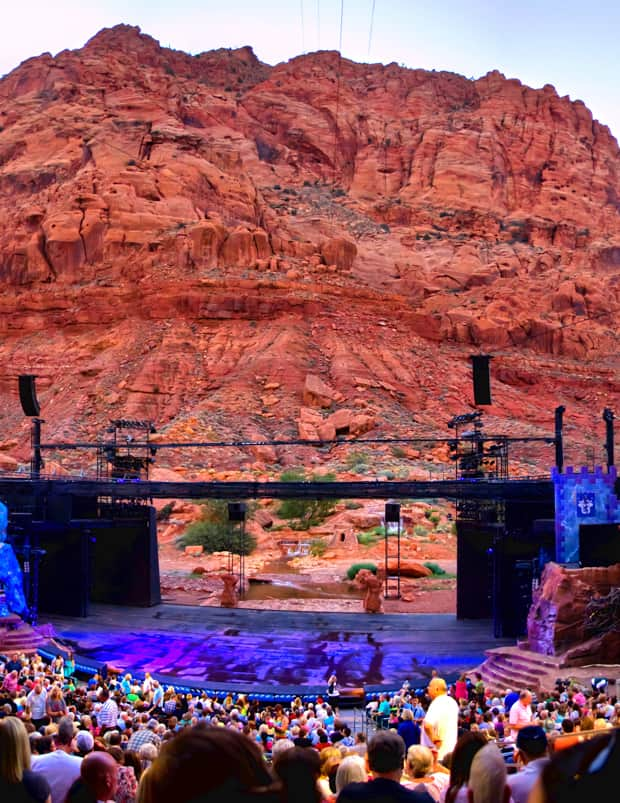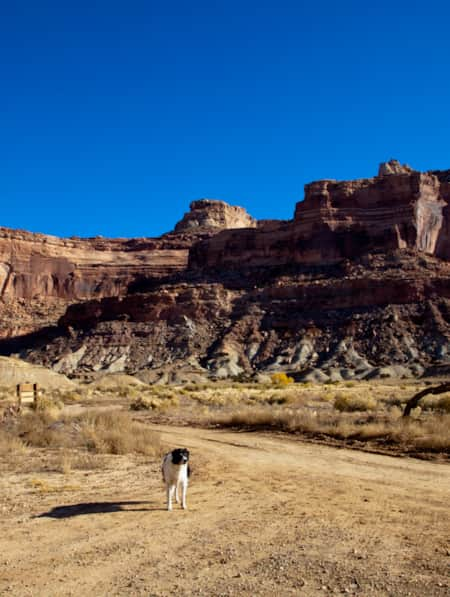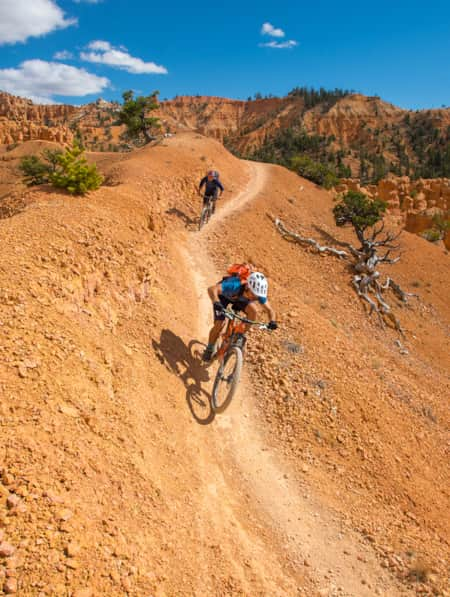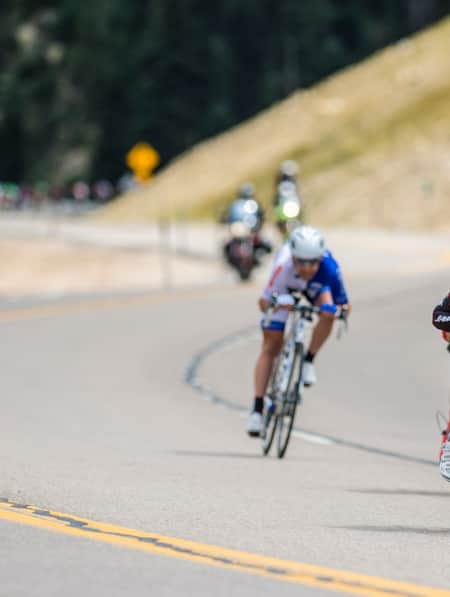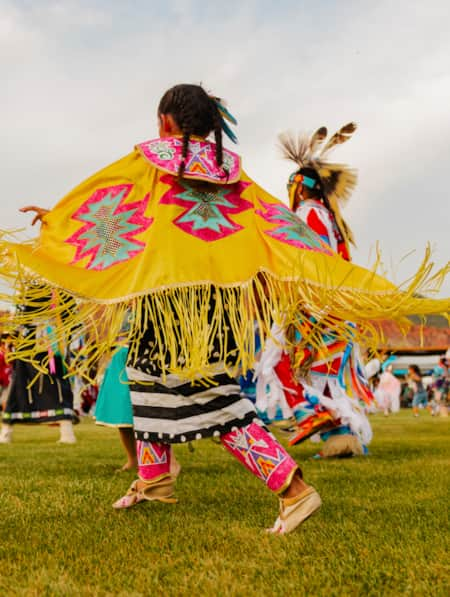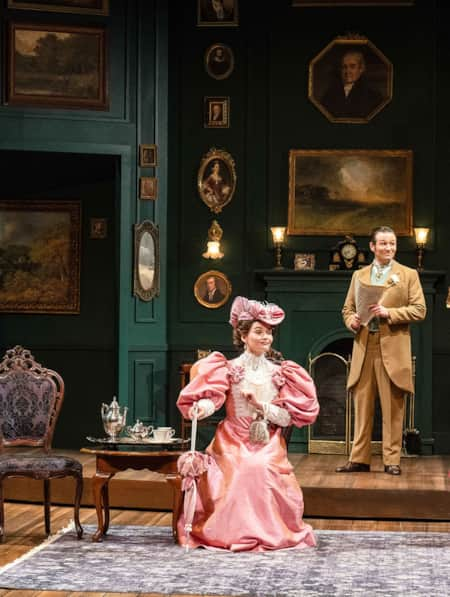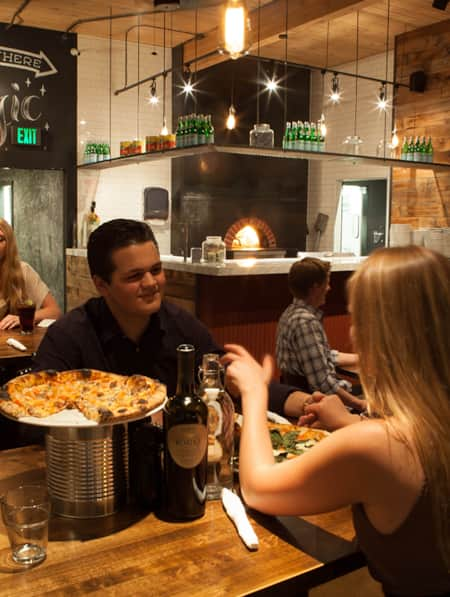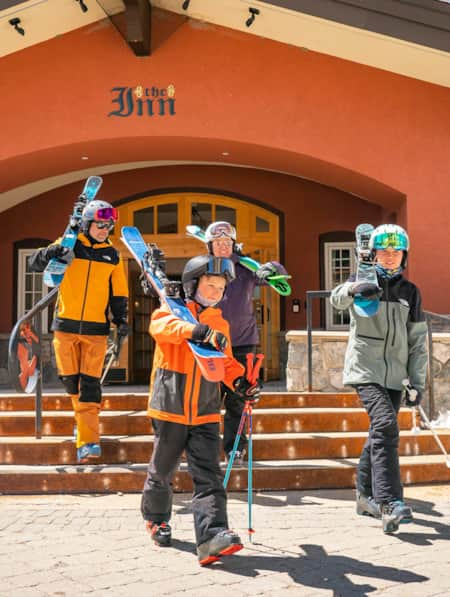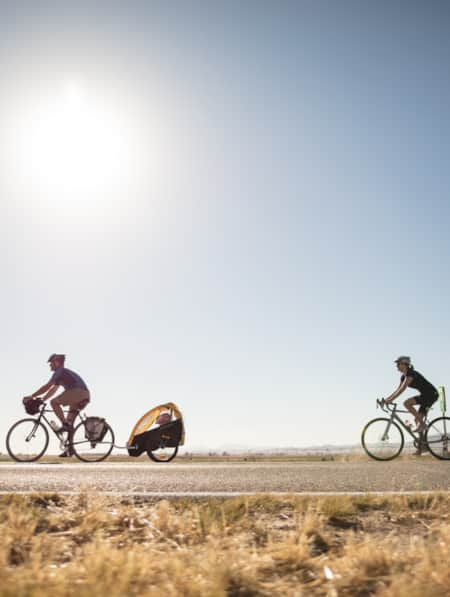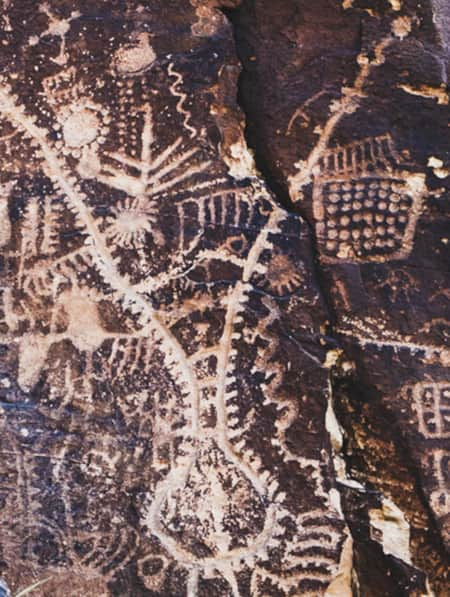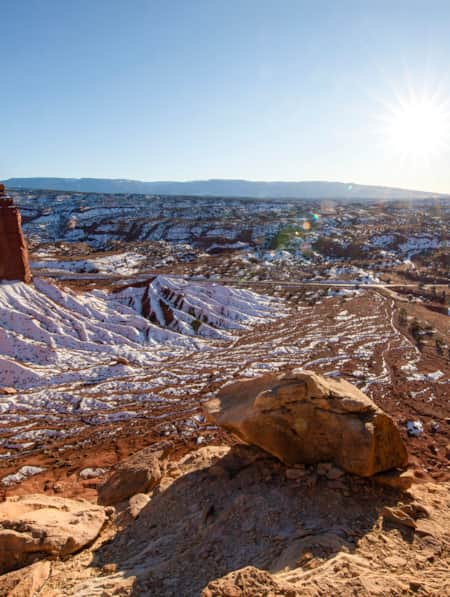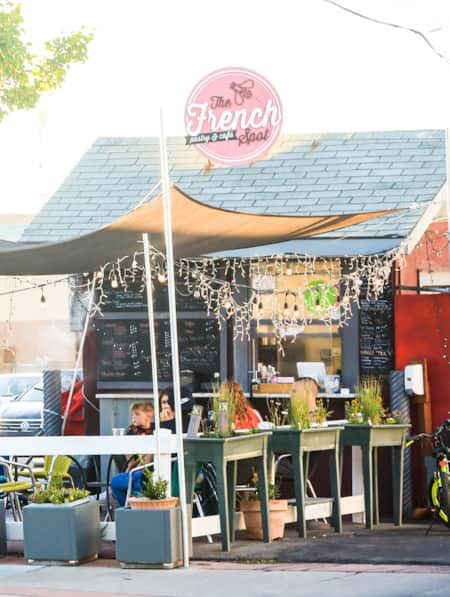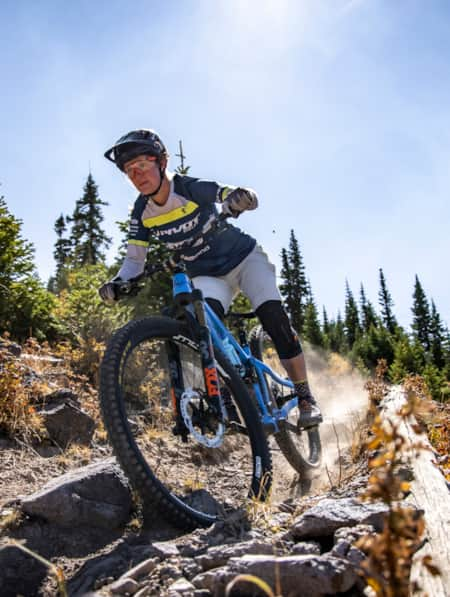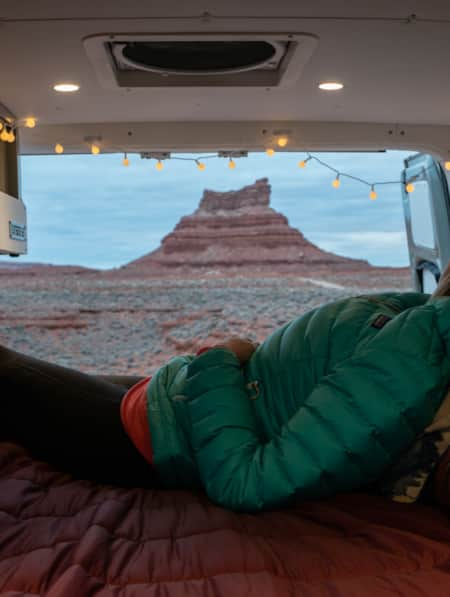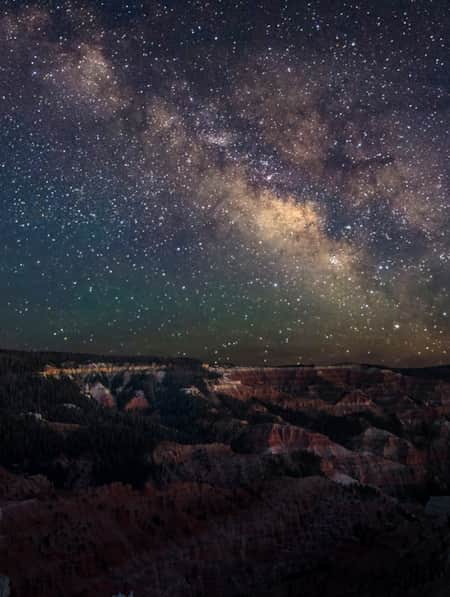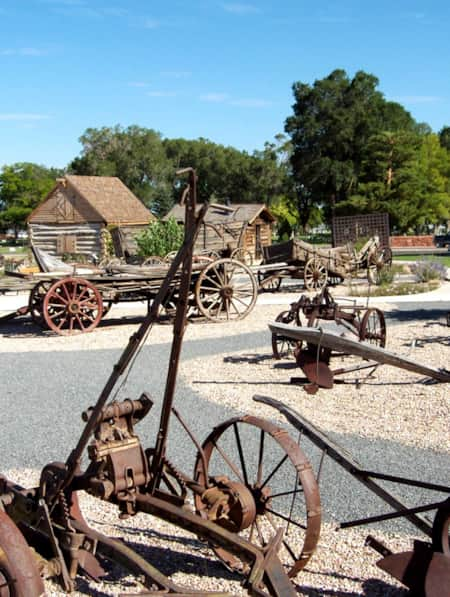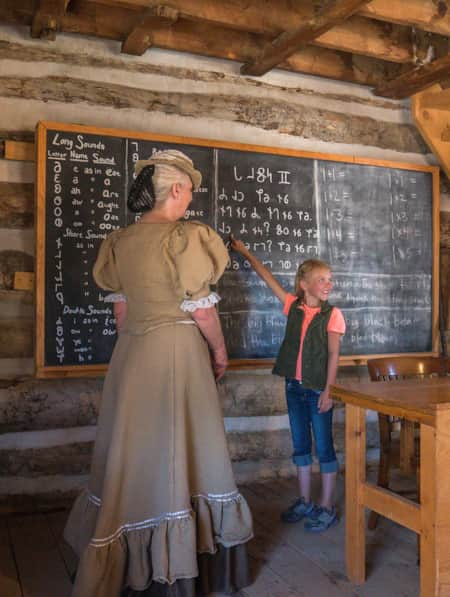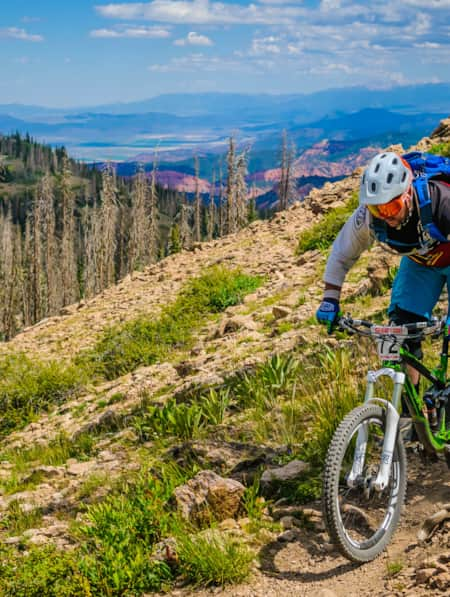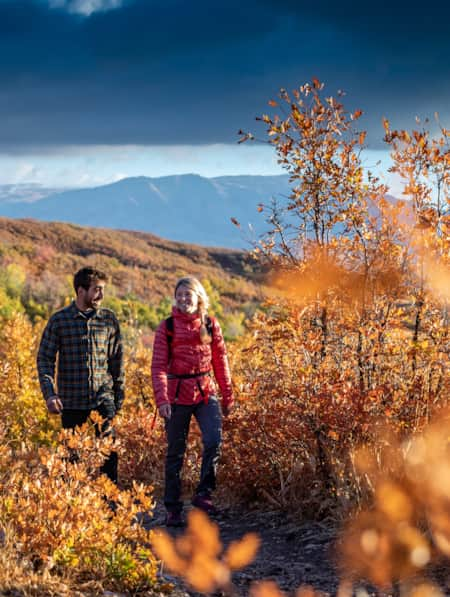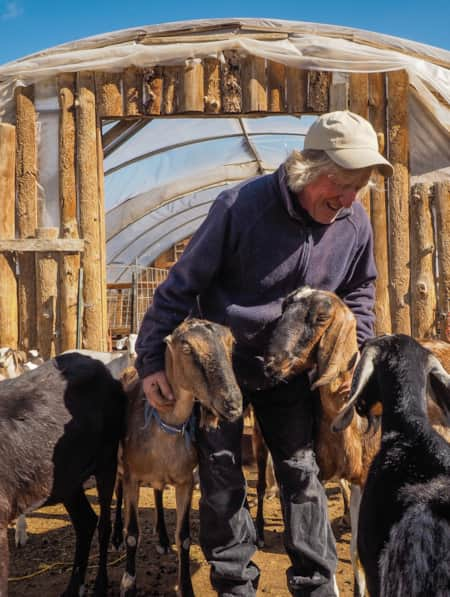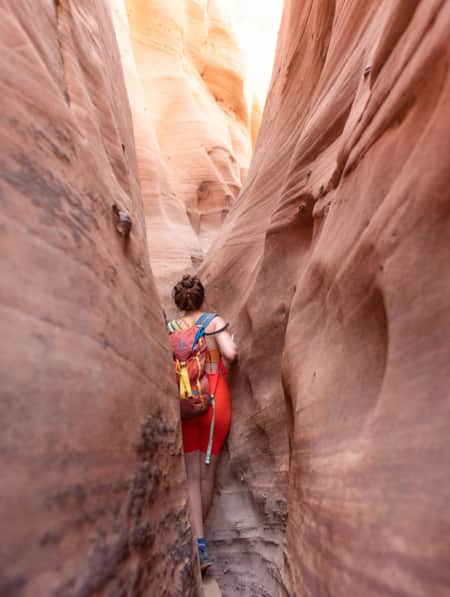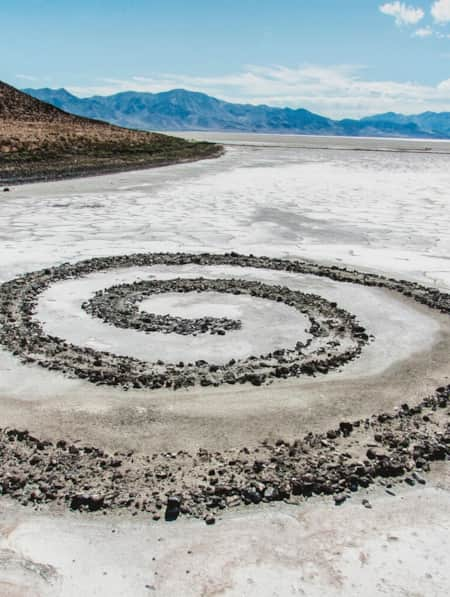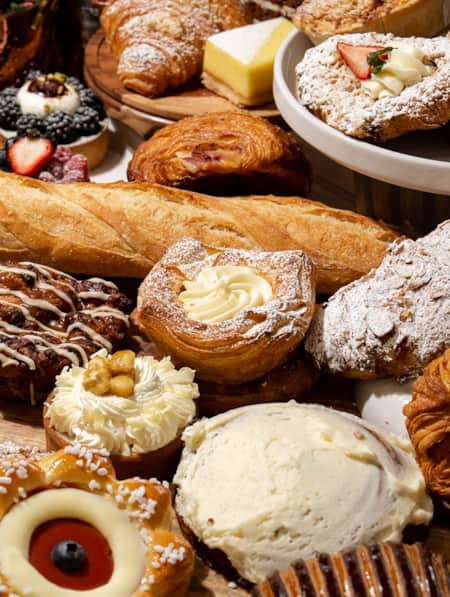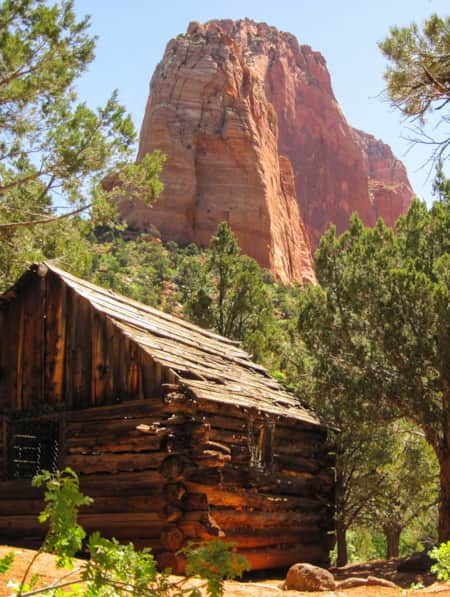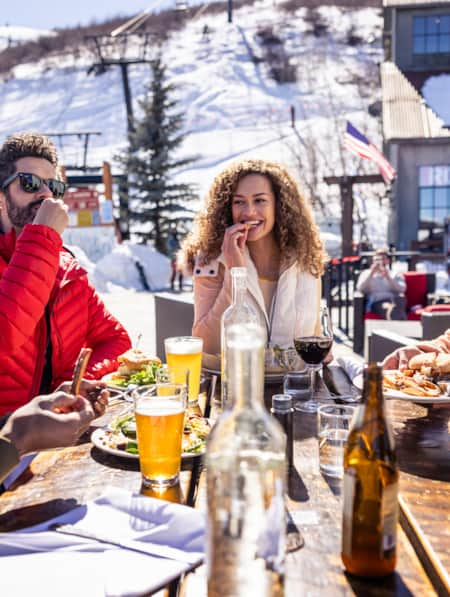Exploring the Cultural Vistas of Cedar City
Visitors expect to find stunning views, yet sophisticated cultural offerings continue to surprise art lovers as they discover this rural outpost.
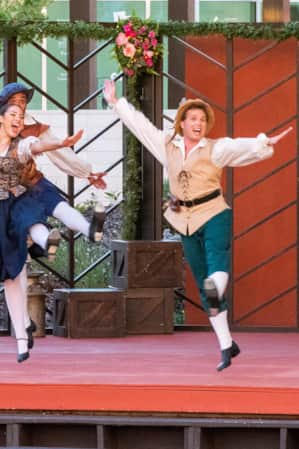
Iron County — On a quiet fall morning, I drive north out of Cedar City. After seeing six lively Utah Shakespeare Festival plays this week, I’m planning to mark a quiet sunrise at the Parowan Gap.
Walking through the Gap, it’s as if I’ve wandered through a secret passageway to the past, a world away from the theaters in Cedar City. I’m awed thinking of the ancient people who passed through here with the seasons, stopping to carve messages on the towering Navajo sandstone cliffs. This place should be respected as a cultural site, "like a temple,” under the mindset of stewardship, says Autumn Gillard, the cultural resource manager for the Paiute Indian Tribe of Utah, whose ancestors most likely helped create the images here. (Read: Heritage and History: Exploring Native and Settler History in a Town Known for Celebrations)
The Parowan Gap, just a short drive off the busy I-15, defines the idea of a roadside attraction, in the same way these panels exemplify the deep artistic history of the area. I view circles, spirals, dots, animals and figures, and I marvel at how the cultural heritage of this place is literally and figuratively carved into these red hills.
I stare at the famed Zipper Glyph, which might represent a solar calendar, or more specifically the story of a leader during a migration, or more generally, hunting or religious rituals. Thanks to my archaeological colleagues at the Utah State Historic Preservation Office, I’ve come to respect my not-knowingness as a way to appreciate the rock imagery the ancients left behind. (Read: How to Visit Rock Imagery Sites Like an Archaeologist)
Heading back to my hotel, I drive through downtown Cedar City, which could serve as a location for a movie set in small-town America. The preserved historic buildings nod to the area’s economic history, as the town was settled in 1851 by members of The Church of Jesus Christ of Latter-day Saints. These settlers were sent south 20 miles from Parowan to build an iron works.
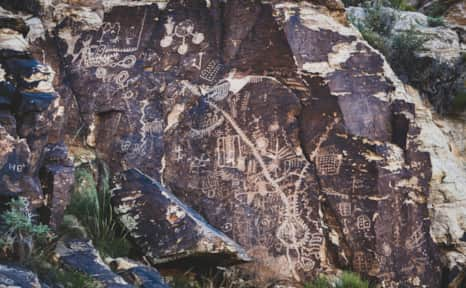
There are an impressive number of panels covered in petroglyphs.
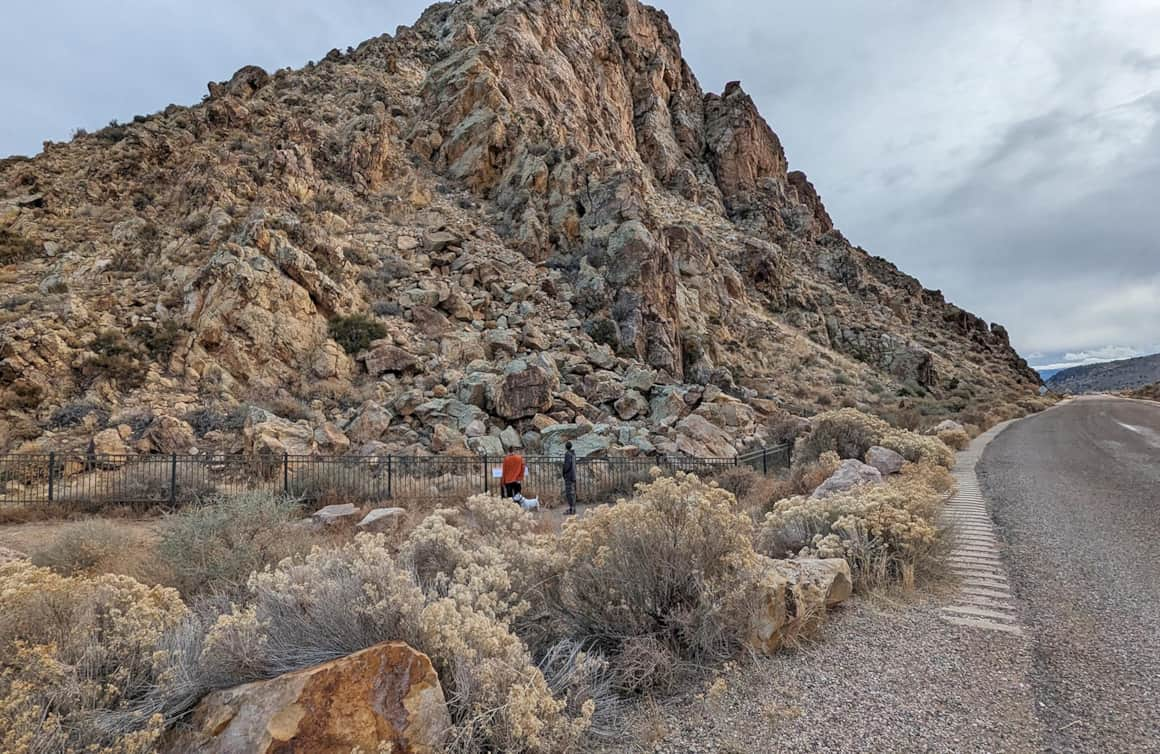
The walls of the Parowan Gap are steep jumbles of weathered and fractured Navajo sandstone.
“One touch of nature makes the whole world kin.”
[“Troilus and Cressida,” Act 3, Scene 3]
Speaking of movie sets, it was in the 1920s that Southern Utah’s epic scenery first became a character inspiring Hollywood storytelling. That’s thanks to the entrepreneurial Parry brothers, who seized the opportunity created by the newly completed spur of the Union Pacific railroad to entice celebrity cowboy actor Tom Mix out of Hollywood. Mix starred in “The Deadwood Coach,” (also featuring Tony, the Wonder Horse), the first Western filmed outdoors in Zion and Bryce Canyon national parks, launching a movie industry in Utah that’s now more than 100 years old.
“From the very beginning, Cedar City wanted people from out of the area to feel comfortable here,” says Ryan Paul, an assistant professor of history at Southern Utah University (SUU), and former curator at the Frontier Homestead State Park Museum. Paul hosts “Main Street Minute,” a history series on YouTube. He wrote the 2011 book, “Celebrate 50 Years Utah Shakespeare Festival,” and 2020’s “Singaway: Working and Playing for the Utah Parks Company 1923-1972” with co-writer Janet Burton Seegmiller.
The outdoors, of course, remains the region’s calling card, as Cedar City serves as the base camp to the stunning scenery of Bryce and Zion national parks, as well as Cedar Breaks National Monument. After all, here you can ski at Brian Head and mountain bike on the same day, or golf and fish, and then camp under dark skies. “You can have a national park experience during the day, and at night you can have a wonderful cultural experience,” says Maria Twitchell, executive director of the Visit Cedar City-Brian Head Tourism Bureau.
“You can come to a play in flip flops if you’ve just come off a trail, and that’s okay,” says Michael Bahr, executive managing director of the Utah Shakespeare Festival. “We’ve got a very granola crowd. We’re a very granola town.”
Over and over, first-time visitors express their surprise at discovering the town’s “deep connection to the arts,” Paul says. He lists the Utah Shakespeare Festival, the regional Orchestra of Southern Utah and the Southern Utah Museum of Art, which he terms “a powerfully important art museum in this part of the state.” “That’s what surprises them, not just the landscape, but the cultural and intellectual landscape that comes with it.”
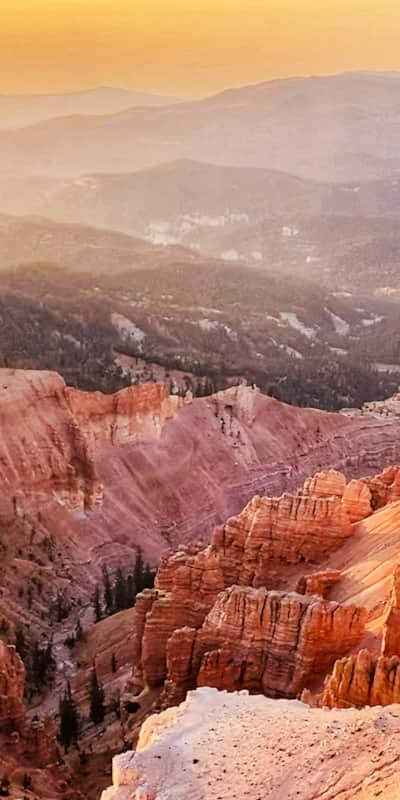
“All the world’s a stage.”
[From “As You Like It,” Act II, Scene 7]
One example of Cedar City’s ongoing revitalization is the gourmet brownie bakery, Ganache-d, located on Main Street. The family-owned business operates in the renovated Cedar Theater, a venue that also hosts popular country dancing events. Historic markers, new wayfinding maps and recent historic preservation projects are helping to draw visitors.
Also helpful: Main Street’s proximity to SUU’s Beverley Taylor Sorenson Center for the Arts, the 8-acre plaza housing the Utah Shakespeare Festival’s theaters and Southern Utah Museum of Art. “I think when people find Cedar City they are seeking a less cosmopolitan experience,” Bahr says. “They’re looking for that nostalgic, quaint home-grown attitude.”
Quaint and home-grown, actually, is a great description of the roots of the theater company. How’s this for a charming scene? Head back in time to the Fluffy Bundle Laundromat in the spring of 1960. That’s when the college’s lone drama professor, Fred C. Adams, and fiancé Barbara Gaddie, began imagining a local Shakespeare company while waiting for their clothes to dry. They dreamed of producing ambitious theater in this unlikely rural location, hoping to entice drive-by tourists to exit the interstate and stay for a night or two.
Making that idea a reality would dramatically reshape the Adams’ lives, as well as the town’s future, according to a plaque recently installed by tourism officials on the east side of 100 West and 100 North, where the laundromat was located.
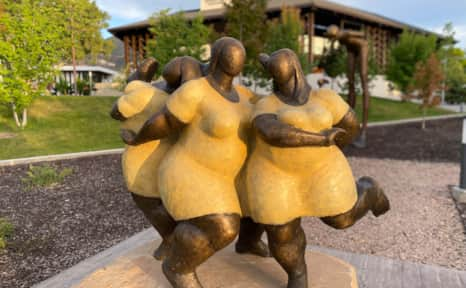
The Stillman Sculpture Court at the Beverley Taylor Sorenson Center for the Arts.
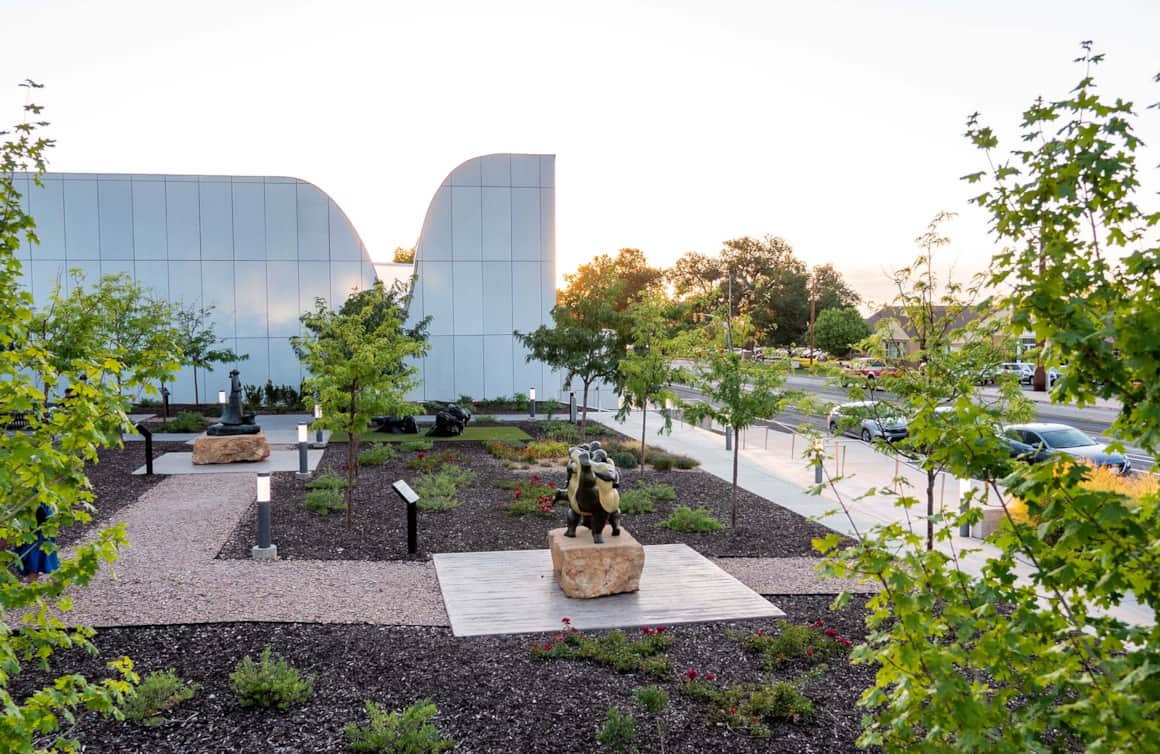
The building for Southern Utah Museum of Art, inspired by the region’s slot canyons, was designed by the California architectural firm Brooks + Scarpa.
“What is past is prologue.”
[From“The Tempest,” Act 2, Scene 1]
In the theater company’s early days, local volunteers and college students (enrolled at Southern Utah College, now Southern Utah University) built sets and sewed costumes between rehearsals, performing on a temporary platform as a stage. Barbara Adams taught young musicians to play recorders, and her merry band of Shakespearean Pied Pipers wound in and out of Main Street shops, attracting visitors to nightly Greenshows as well as Shakespeare’s plays.
Over the years, the company grew into one of the state’s biggest cultural draws, entertaining more than 100,000 visitors annually from all over the world. The Utah Shakespeare Festival has earned national and international acclaim, including a prestigious regional Tony Award in 2000. That’s thanks to the endless vision of Adams, still an energetic arts advocate when he passed away in 2020 at age 89. For most of those years, he worked concert with his longtime colleague, R. Scott Phillips. Phillips retired in 2017 after 40 years at the theater company, and is helping to fuel the town’s growth while serving on the city council.
Festival theaters include the majestic outdoor Engelstad Shakespeare Theatre, the Randall L. Jones Theatre and the Eileen and Allen Anes Studio Theatre, located on the university’s arts plaza, anchored on the northwest corner by the soaring sculptural architecture of the art museum. “The largest city is three hours away, and yet we have an art museum that should be in a much bigger city,” says Twitchell, describing Cedar City as “a completely rural town of 29,000.”
“Thy friendship makes us fresh.”
[“Henry VI.” From Act 3, Scene 3]
During the summer and fall, locals, the university community and visitors mingle on the plaza or in theater lobbies. Embracing the cultural messages carved into Parowan Gap and other locations, the festival has embraced the region’s earliest residents, spotlighting young Native dancers and musicians in regular Greenshows.
The festival also thrives on the energy of more than 350 volunteers trained to help answer questions, share history and help visitors find their seats. Another sign of cultural vitality is the students drawn to regular outdoor concerts at downtown’s Blaine H. and Loa M. Johnson Art Center for Community Arts and Education, named for a longtime SUU music professor, on 100 West.
Beyond theater, there’s a year’s worth of events in a town that tourism officials promote as “Festival City,” including the Paiute Tribe’s Restoration Pow-Wow, held annually in June (Read: How to Attend a Powwow with Respect). The town’s schedule includes the Larry H. Miller Utah Summer Games, and in a nod to the area’s agricultural history, the annual Cedar Livestock & Heritage Festival, which includes a popular sheep parade down Main Street in late October. Restaurants such as Centro Woodfired Pizzeria or the Pub Spirits + Craft Kitchen, and the I/G Winery tasting room draw patrons downtown. On the south end of town, locals tout the Pizza Cart, Brody’s Mexican Restaurant and Bruno’s Italian, a dining gem located in a Chevron gas station.
“We know that we all need each other,” Bahr says. “That’s the cool thing in a small town. The town’s too small to be divisive.”
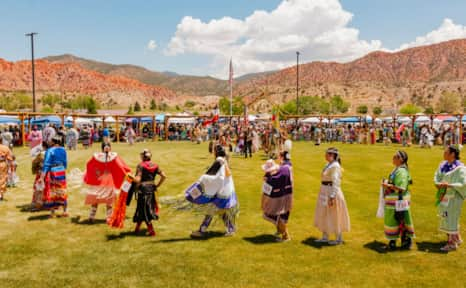
Beyond theater, there’s a year’s worth of events in a town that tourism officials promote as “Festival City,” including the Paiute Tribe’s Restoration Pow-Wow.
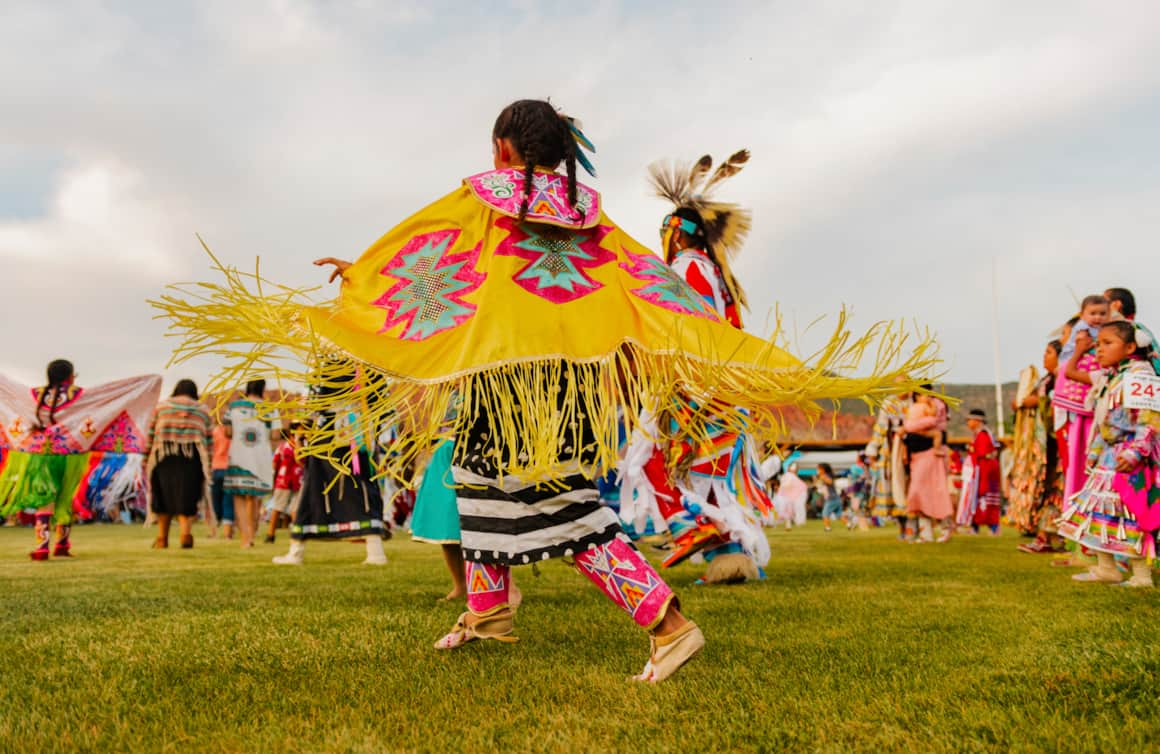
The Paiute Tribe’s Restoration Pow-Wow is held annually in June.
When You Go
Utah Shakespeare Festival
195 W. Center St., Cedar City (Theaters located on Beverley Taylor Sorenson Center for the Arts, Southern Utah University campus.)
The Annual Utah Shakespeare Festival runs from June through October. Children under 6 years old aren’t admitted to plays. For family travelers, the company offers professional childcare services. I remember walking back to our hotel after a show with our twin 4-year-old daughters twirling down Cedar City sidewalks, wearing princess crowns. Our daughters were upset when they learned that one evening of childcare wasn’t the same as a week of camp. Childcare, $10 per child; reservations required.
Regular theatergoers say they are drawn back by what the company calls the “festival experience,” add-on events such as the free Greenshow and backstage tours, as well as daytime literary and production seminars that take place on the plaza between theaters.
Another offering is the August run of Words Cubed, the festival’s play development series. Theatergoers can see staged readings of contemporary plays in development. Check the website in summer for playwrights, titles and plot summaries.
Tickets: At bard.org/tickets, 800-PLAYTIX, or at the Ticket Office onsite. Discounts for Iron County residents.
Southern Utah Museum of Art
13 S. 300 West, Cedar City, Beverley Taylor Sorenson Center for the Arts (Southern Utah University campus)
In 2007, notable Utah artist Jimmie F. Jones donated his home located near the mouth of Zion Canyon and his artwork, as well as his collection of works by other artists to SUU. His foundational gifts inspired the building of the museum, where a gallery is named for him.
The building, inspired by the region’s slot canyons, was designed by the California architectural firm Brooks + Scarpa. It was named the best-designed museum in Utah by “Architectural Digest,” and some consider it one of the town’s most prominent artworks.
More Visual Art
Beyond the art museum, you can find visual art offerings all over town, according to Sara Penny, of the Cedar City Arts Council. There are shows at the Artisans Gallery, 94 W. Center St., and the Kolob Gallery Co-Op at The Art Center, 111 S. Main, #1. Visitors can also look for art exhibits around town at the Cedar City Library, 303 N. 100 East, and at City Hall, 10 N. Main St., or join summer art walks on the last Friday of the month.
Visit the Cedar City Arts Council website for updated event information.
Annual Restoration Gathering Pow-Wow
Pow-Wow Arbor, 440 N. Paiute Dr., Cedar City
The Paiute Indian Tribe of Utah invites visitors and local residents to celebrate its past, future, culture, heritage and lands at an annual three-day summer festival, celebrating the 1980 date when the Tribe received restored federal recognition. Activities include community dances, as well as a queen and princess pageant, parade and car show.
For more information on attending the Annual Restoration Gathering Pow-Wow, visit pitu.gov.


